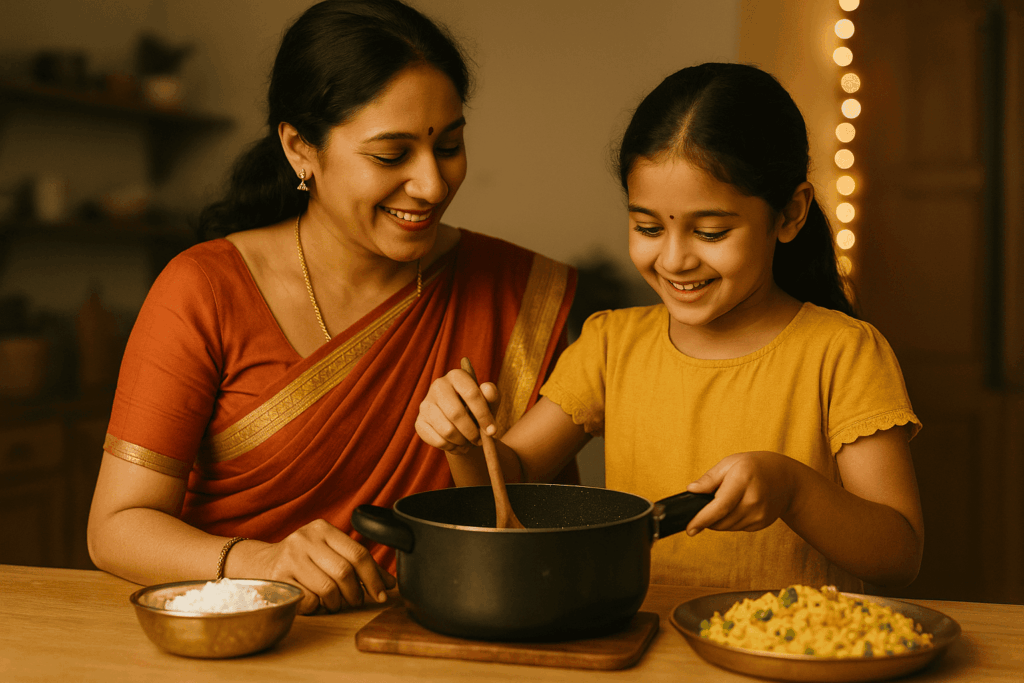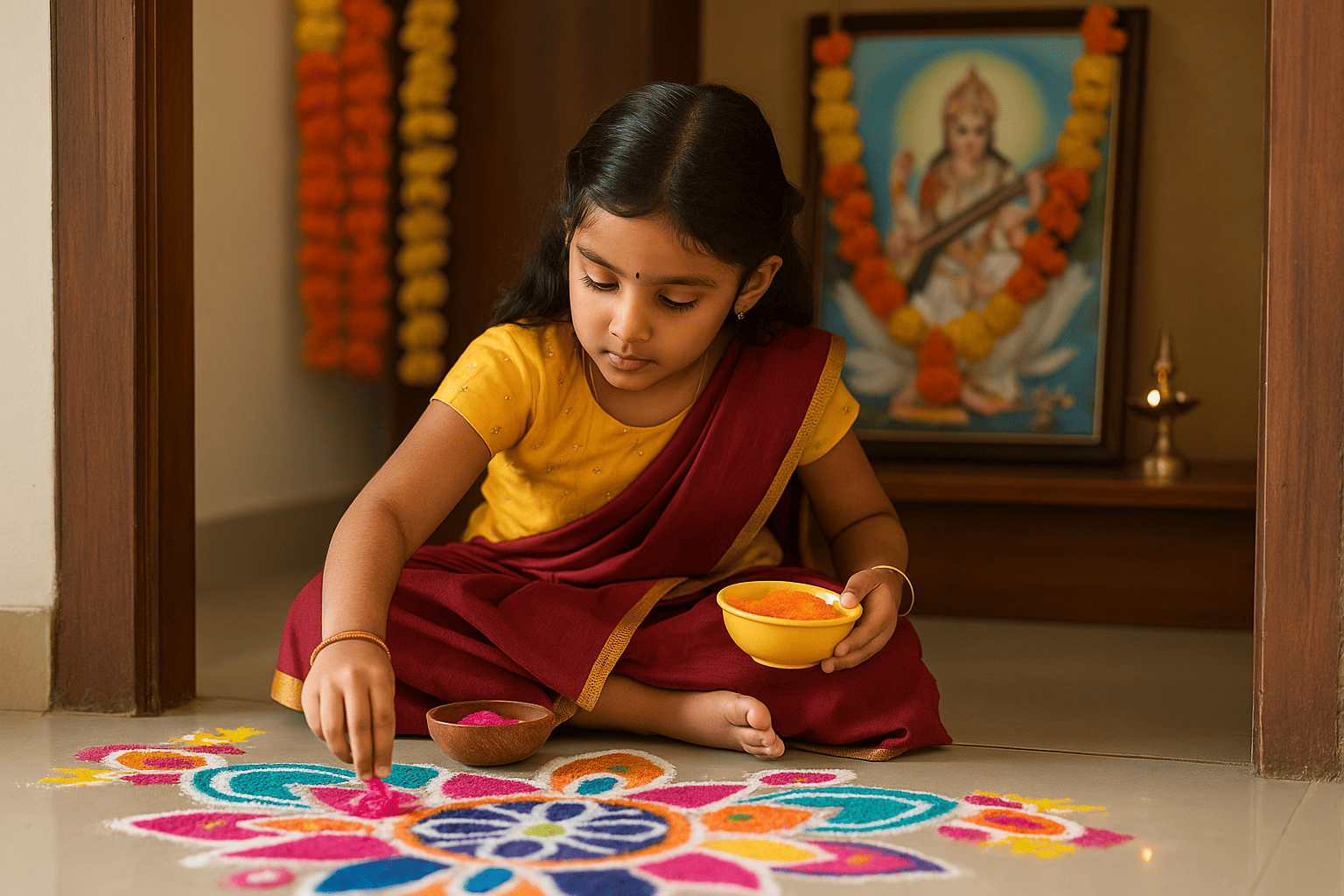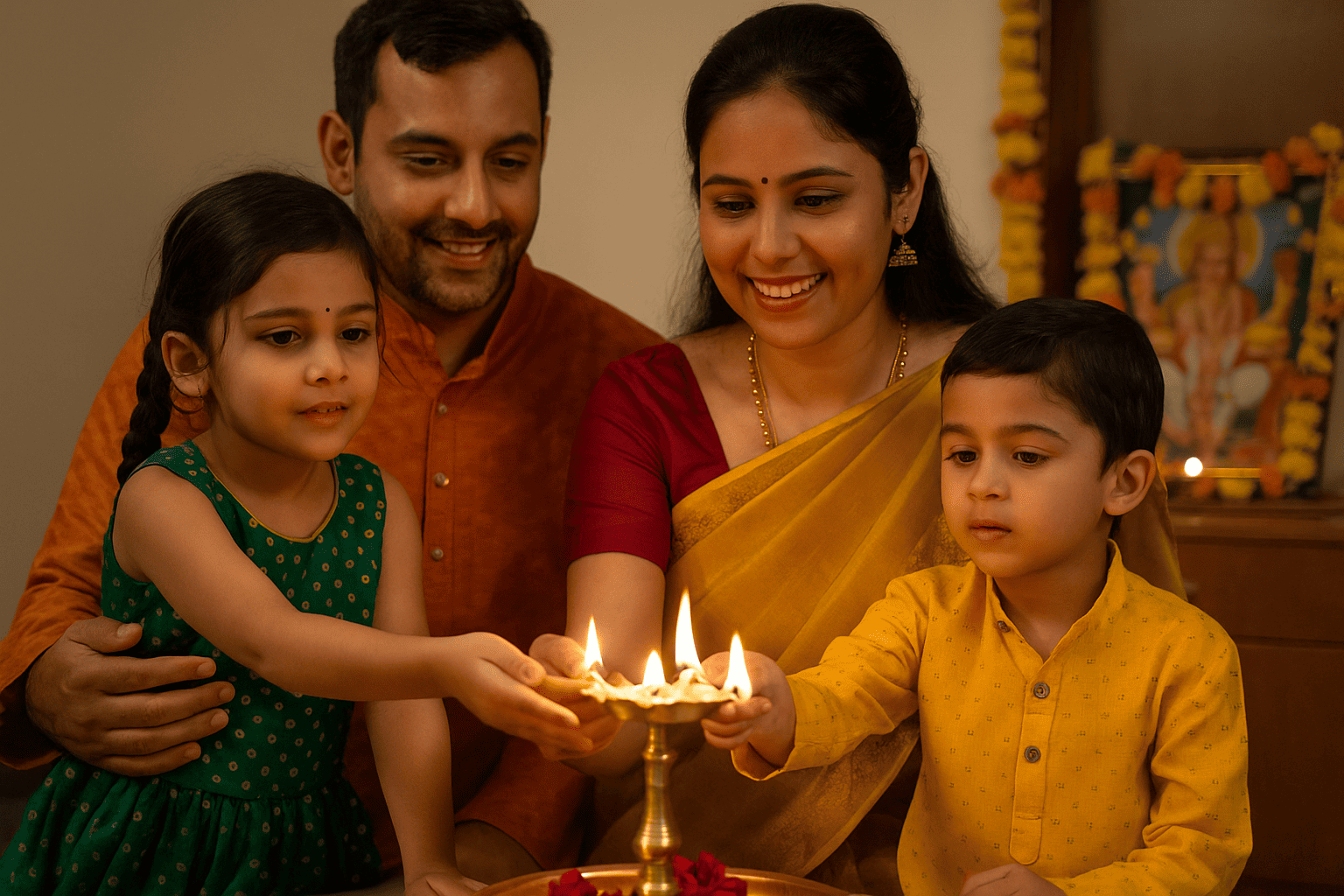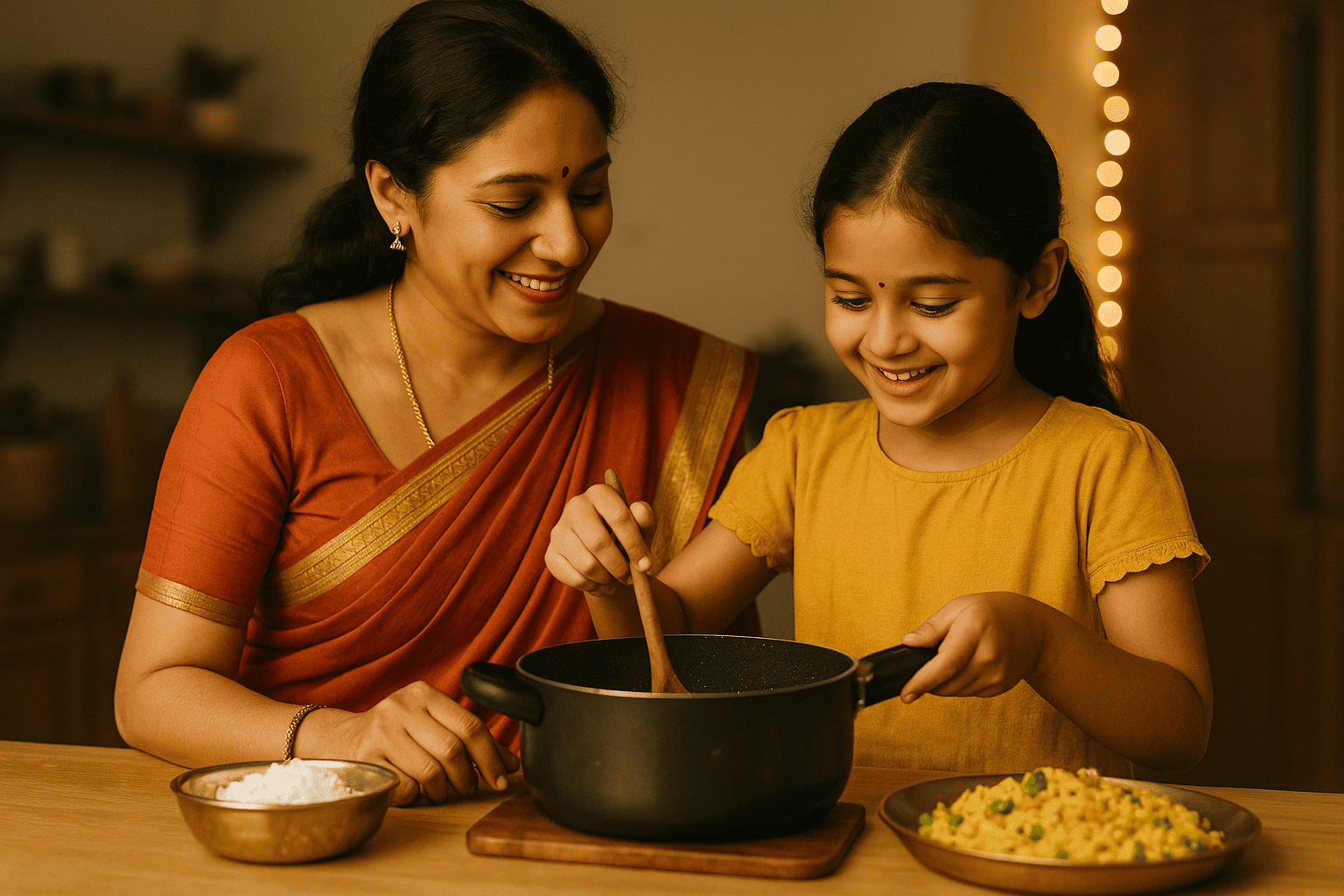

Within every spoonful of a traditional meal lies something more than flavour. There are echoes of prayers whispered over stoves, seasons that shift with the spices, and hands that once stirred the same dish long before us. In many Hindu homes, the kitchen is not only a place of nourishment. It is a space where memory, meaning, and heritage come together.
Cooking can be one of the most natural and joyful ways to introduce children to Hindu culture. The act of preparing food together opens the door to stories, rituals, and values that live far beyond the plate.
Children remember with their senses. The warmth of jaggery, the crispness of a vadai, the cool touch of curd rice on a hot afternoon—all of these become part of their internal library of comfort and familiarity. Inviting them into the kitchen gives them more than practical skills. It offers them a sense of ownership and belonging.
Let your child stir pongal as it thickens in the pot. Allow them to sprinkle coconut onto payasam or roll small balls of rava ladoo between their palms. These moments, though simple, are powerful. They turn the act of cooking into an experience of shared memory.
Cooking becomes more meaningful when its purpose is explained. Rather than focusing only on instructions, consider sharing the small stories hidden in the ingredients. You might say, “We use sesame seeds during the Thai month because they help keep the body warm,” or “We add jaggery before prayers to make sure our words are sweet.”
These stories do not need to be long. What matters is that they connect each dish to a season, a value, or a reason. Over time, these small explanations help children understand that cooking within Hindu tradition is an act of care. It is a form of devotion that speaks through the body and through the senses.
Festivals often bring out the grandest dishes, but everyday meals can also become moments of cultural connection. A bowl of lemon rice can carry the memory of temple lunches. Tamarind rice can spark a conversation about prasadam offerings. Curd rice served with a touch of cumin may become a quiet evening comfort, paired with a story about summer rituals or ayurvedic wisdom.
These are not complicated lessons. They are quiet opportunities. They allow everyday nourishment to be linked with deeper roots.
The kitchen also becomes a place for questions. A child might ask why turmeric is used in so many dishes. They may wonder about the first person who taught you a family recipe. These conversations create bridges. They help a child see that food carries memory and that memory is worth sharing.
Even the smallest acts—lighting a lamp before preparing a special dish, reciting a short prayer before serving the first spoonful—can shape a child’s understanding that food is not just functional. It is sacred.
When food is prepared with care and accompanied by story, it becomes much more than a meal. It becomes a connection. It becomes a form of cultural expression that a child can carry forward into their own life. One day, that same child may stir pongal in a new kitchen and remember the way you smiled when they got the consistency just right.
Introducing culture through cooking does not require elaborate feasts or advanced recipes. It begins with an open kitchen, a shared task, and a story told while the dal simmers. These moments shape a kind of knowing that stays long after the meal is done.







